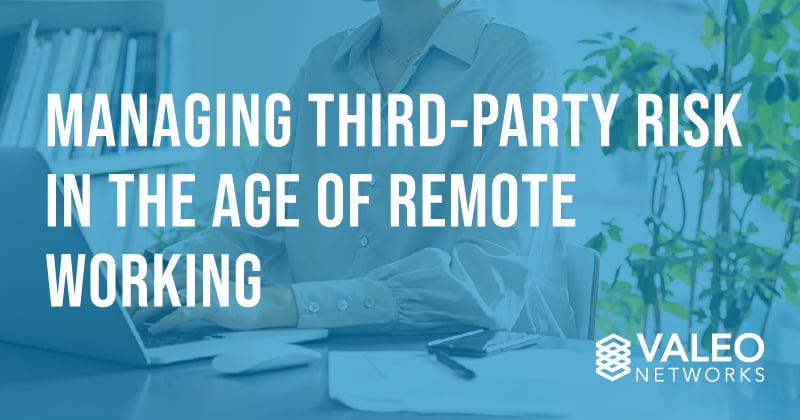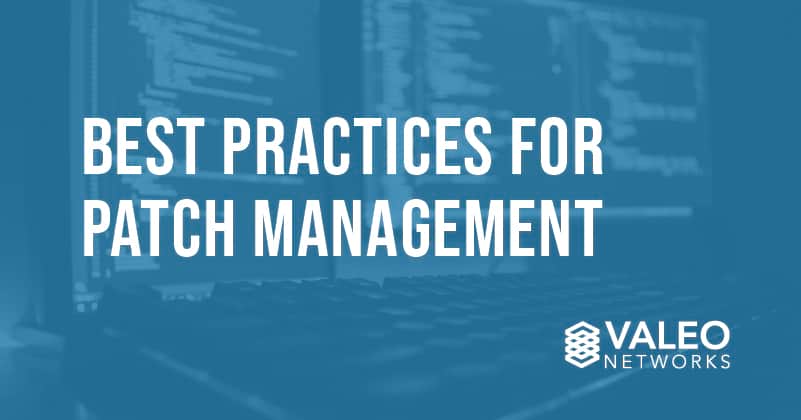Navigating Vendor Management Program Risk in the Age of Remote Working
Remote work was already a trend being adopted worldwide before the global COVID-19 pandemic necessitated its widespread acceptance. Now, the rapid...
Proactive management is one of the most important factors in ensuring a productive vendor life cycle. While under contract with a third-party organization, the goal should be to create clear paths of communication to ensure standards are maintained between employees in both parties. If you can layout your expectations, check in on them frequently, and create key performance indicators (KPIs) that are easy to understand, life will be easier. With that in mind, let’s take a look at the seven vendor management best practices for success.
Realistically, communication is going to be at the forefront of all vendor relationship management best practices. There is no other way to have a firm understanding of a vendors’ outlook on business, their compliance practices in a sector, or their employees’ view of the contract.
One of the biggest mistakes we see is when a customer assumes that a vendor shares similar standards or organizational philosophies. This is especially critical when dealing with data management and security. One team’s version of compliance may be vastly different from another’s. In fact, some companies don’t even address cybersecurity in a proactive fashion.
Try to treat every element of your contract as ineligible to move forward until you’ve had a conversation about it. While this isn’t always possible, even expressing this intent will let your vendors know that you’re committed to maintaining long-term integrity for your business, its data, and results.
Within each segment of a vendor relationship, you must determine what level of risk there is. This includes one-way risk to your business, one-way risk to the vendor’s business, and structural risk to your contract and its products.
To put it simply: If you can’t forecast something that could go wrong, you’re not looking hard enough.

Granted, this doesn’t mean there will always be trouble in a contract. However, if you aren’t consistently forecasting risk, you are relying on vendor security, or even worse — no one at all.
We recommend creating a shared file suite that outlines your concerns and matches them with your vendors. You can then allocate parts of the contract to the appropriate members of each team.
When you go about selecting a quality vendor, part of that process is the ‘who’ component. A partnership product is worthless if its employees and support for the product are not competent.
Conversely, strong teamwork from both sides will allow for a positive workflow and more production overall. You would have to imagine that any company worth their salt will hold your organization to high standards, so make sure to understand their plans and strategies.
Once you have coordinated with your vendor, review the strategy often. You should be able to make painless adjustments if you are all committed to the same goals and understand the collaborative resources available.
Building off of the collaborative strategy, focus on performance standards that are regularly monitored by both parties. KPIs that keep both teams in check and act as referrals for new employees or auditing will make life much easier for you and the vendor throughout the contract.

Whether you are a small business contracting a large Software as a Service (SaaS) company, or vice-versa, it is important that each side is held accountable for their performance. If the goals and milestones along the way are well-defined, it should make it easy to see who is holding up their side of the bargain.
One of the integrative issues that grow more important daily is data management. With the business world, its transactions, and records being predominantly digital now, too much is at stake to risk your data and reputation. Most importantly, if you suffer a cyber-attack or data breach, there can be far-reaching legal and financial implications.
Third-party vendors are the second most common form of data breach among businesses. This is because they add a human element that is not governed by your own protocols. In order to mitigate this risk, you must integrate your standards and the vendors within a clear term sheet before working together.
If you are able to ensure that the vendor understands device and network safety, password protocols, and threats like phishing, you are off to a good start. There are numerous other pitfalls for which your IT team should be able to create a comprehensive list.
Generally, contract negotiations begin by focussing on pricing. However, as you narrow down your potential vendors, you can explore new paths to success by adding long-term value to your organization and paying the appropriate price for it.
Finding a vendor who can complement your weaknesses and grow your team is going to make paying a little more worthwhile. Similarly, if you are working on a contract where there is a collaborative product, you should present value and express it within your pricing.
When it comes down to it, you get what you pay for; make sure that both parties understand this.
Similar to establishing mutual value propositions, you should only look to enter contracts with vendors who truly care about long-term outcomes for both sides. This means they should also be focussed on vendor management and not be offended if you look to manage these steps collaboratively.
While in the process of collaboration, you should have access to metrics that tell you if you are trending towards long-term success. Hope is not good enough to get most contracts through, and if neither team understands what a win looks like in the mid-term, there is a good chance you will not reach your goal.
Make sure to clearly communicate what a victory looks like for you and listen to your vendor’s version of success.
Regardless of your organization’s size and the type of vendor you are working with, managing the relationship is a key element of success. Having a list of best practices will help keep your respective teams in line, and putting the proper time into its creation will pay itself back tenfold.
We recommend consulting with an expert about how to create an optimal vendor management practice. With over two decades in the IT and risk management sector, we’d love to partner with you for success. Consider contacting us to put you on the path to better vendor management practices.


Remote work was already a trend being adopted worldwide before the global COVID-19 pandemic necessitated its widespread acceptance. Now, the rapid...

Migrating your business data to the cloud is a smart move that reaps cost and performance benefits from enhanced flexibility, scalability and...

It’s no surprise that modern enterprises will experience cyber threats. Organizations can mitigate the risk through best practices such as enabling...

With cutting-edge technology and quality customer service,
you’ll find everything you need to help your company soar
with Valeo Networks.
1006 Pathfinder Way
Rockledge, FL 32955
Business Hours:
M-F: 8AM-9PM
© 2025 Copyright Valeo Networks. All Rights Reserved.